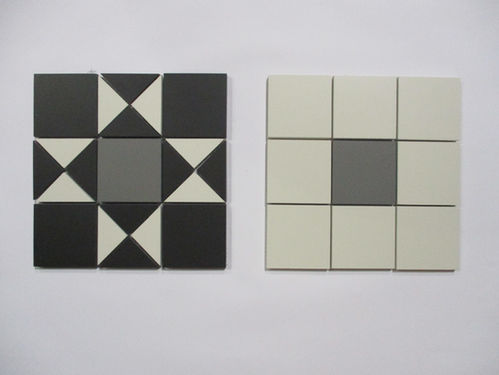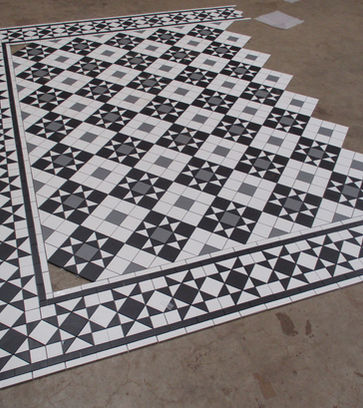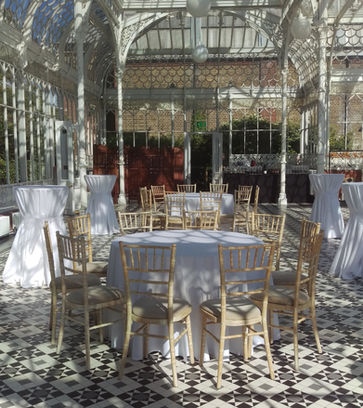The Grade II Listed Coombe Cliff Conservatory is considered a pioneering example of architectural cast ironwork in its day. Due to neglect and eventually fire damage in 1977, it was dismantled and left as component parts at Crystal Palace Park. In the 1980s, English Heritage funded the rebuilding of the Conservatory at its current location on the Horniman Museum’s 16 acre site in Forest Hill. The aging structure was in need of essential conservation and restoration work for it to continue to be an integral part of the museum and usable by the visiting public.
The brief was to ensure the restoration retained and reinforced the historic aesthetic of the conservatory. This included replacing the existing quarry tile with a geometric patterned polychromatic tiles inspired by Victorian design to highlight and celebrate the era in which the both the conservatory and museum where originally built.
One of the main project challenges was to create a tile solution in a Victorian inspired geometric pattern that could cost effectively be designed, manufactured and installed within a tight budget, and a timescale that minimised the disruption to the Museum and its visitors.
This project is a great example of how Armatile works in partnership with all project stakeholders, including the client, contractor and installer to provide a tailored tile solutions for heritage restoration projects.
Armatile also worked alongside Tile Association Members Mapei and Schluter Systems to provide problem free solutions to the tile installation that will maintain the long term integrity of the completed project.
The historically sensitive restoration of the beautiful Grade II Listed Conservatory is stunning. The Conservatory is now useable all year round and breathed new life into the previously aging structure. It is now swiftly becoming a very popular wedding venue as its award-winning gardens setting is enhanced by views of the spectacular London skyline.
The Brief





































